I am thinking how to escape from school to visit Yauyos with Mayra, when she calls me unexpectedly one Tuesday night.
” I have to go back to Caracas.”
The newspapers and TV here largely offer opinions rather than real news. Film footage – empty food markets, people marching, political speeches and handshakes – is rarely put in context. There are many journalists on twitter, appearing to offer first-hand information, but they too seem polarised and shallow. Mayra, I know, calls her family at least weekly. In the last few months, there has been some difficult news. But I have not asked about it. Not because I am not concerned, but because I know she is worried and distressed.
I realise that I have never really understood what she knows, what her family is experiencing, or how she feels about it. I told myself I was not asking, because it would upset her. Now I think it was easier for me to not get involved.
We have a short tense conversation.
“What are you going to do? What can you do? Can’t you help from here?”
“My family are running out of food. They are living on their little savings. The currency has depreciated. There are queues on the shops – just for rice and beans. And power cuts. The country is collapsing.”
“How can that happen.?” I ask. “The country has some of the world’s biggest oil reserves! It’s the Saudi Arabia of South America.”
“The management positions at the oil wells, the refineries, the distribution companies were given to Army generals. They steal the money and forget about maintenance. Of course most of the experienced engineers have left.”
She is silent, breathing heavily. She seems balanced between tears and fury.
“I thought Chavez used the oil wealth to invest in hospitals and schools, in infrastructure to help business?” I say.
“Yes he did. We had eight years. And then the world recession hit in 2008, caused by the collapse of the sub-prime mortgages market created by the unregulated US banks. The price of crude was over $160 dollars a barrel in June 2008, and by the following January is was little more than 5o dollars. Our export income fell by 60%.”
There is a pause.
“But Chavez was just beginning his third presidential term,” she continues, “with his highest support ever. Instead of trimming the sails he accelerated, buying up food producers, banks, steel and concrete companies to be owned by the state.”
She pauses again.
“At some stage, Chavez lost control. He appointed army generals to run those new state industries. The country is now in the hands of a parasitic gang of generals and cronies who are looting the country.”
“They control the oil industry, the drugs trade and the illegal gold mining,” she continues.”They control the police, the army and the justice system. The country has been taken over by a parasite which is eating us alive. They will continue until they have consumed the host.”
“So what can you do?”
“My family is struggling to survive crises every day. Drinking water from ditches. Searching for food in abandoned houses. They have to get out. I have to go there and bring them out.”
The line goes dead.
***************************************************************
Without Mayra, I am left to my own isolated musings. To clear the images of desperate Venezuelan refugees from my head I visit museums or sit in the library, trying to understand the history of metalworking in Peru and the cultural context that might underlie these tumis and tupus engraved on the stones.
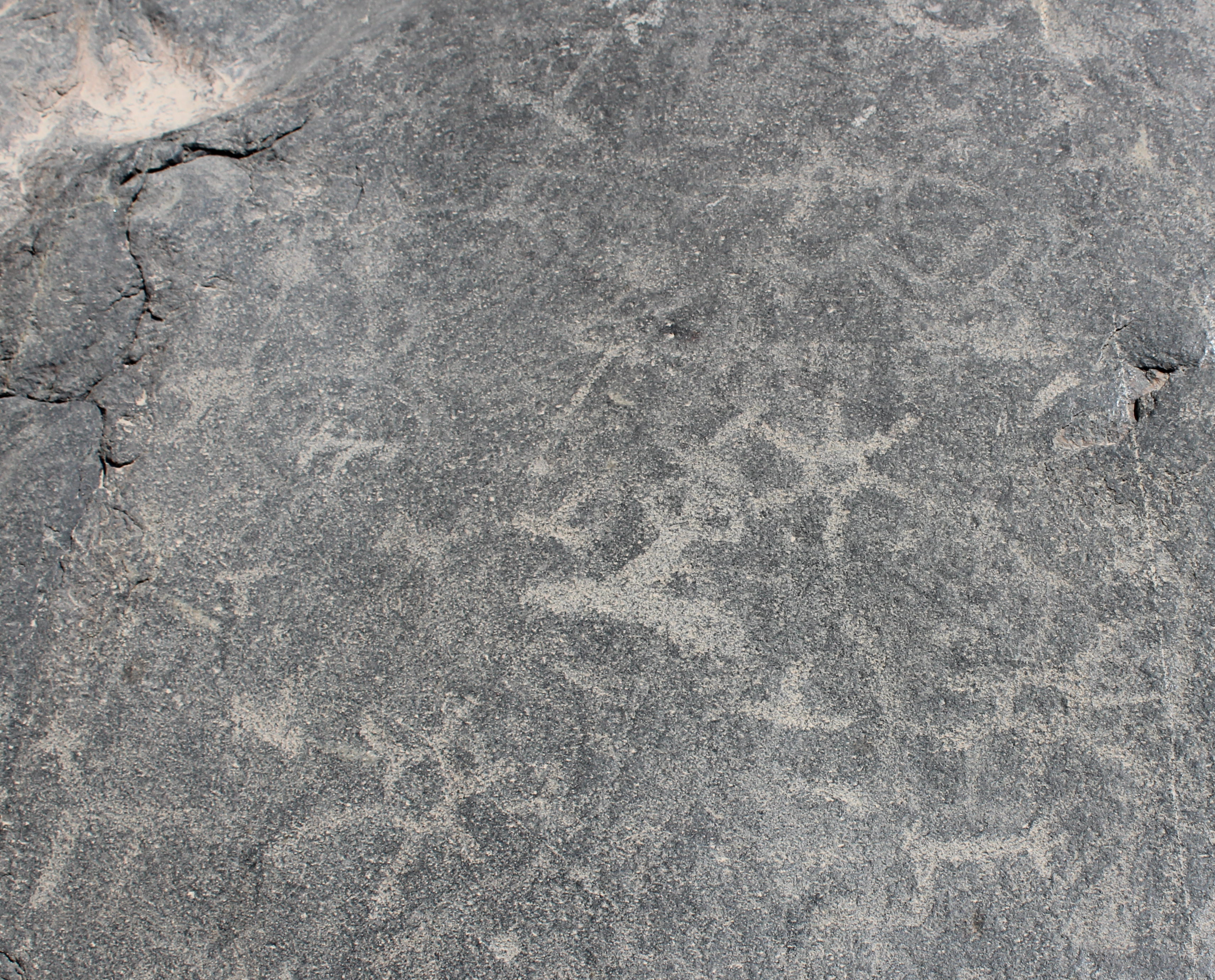
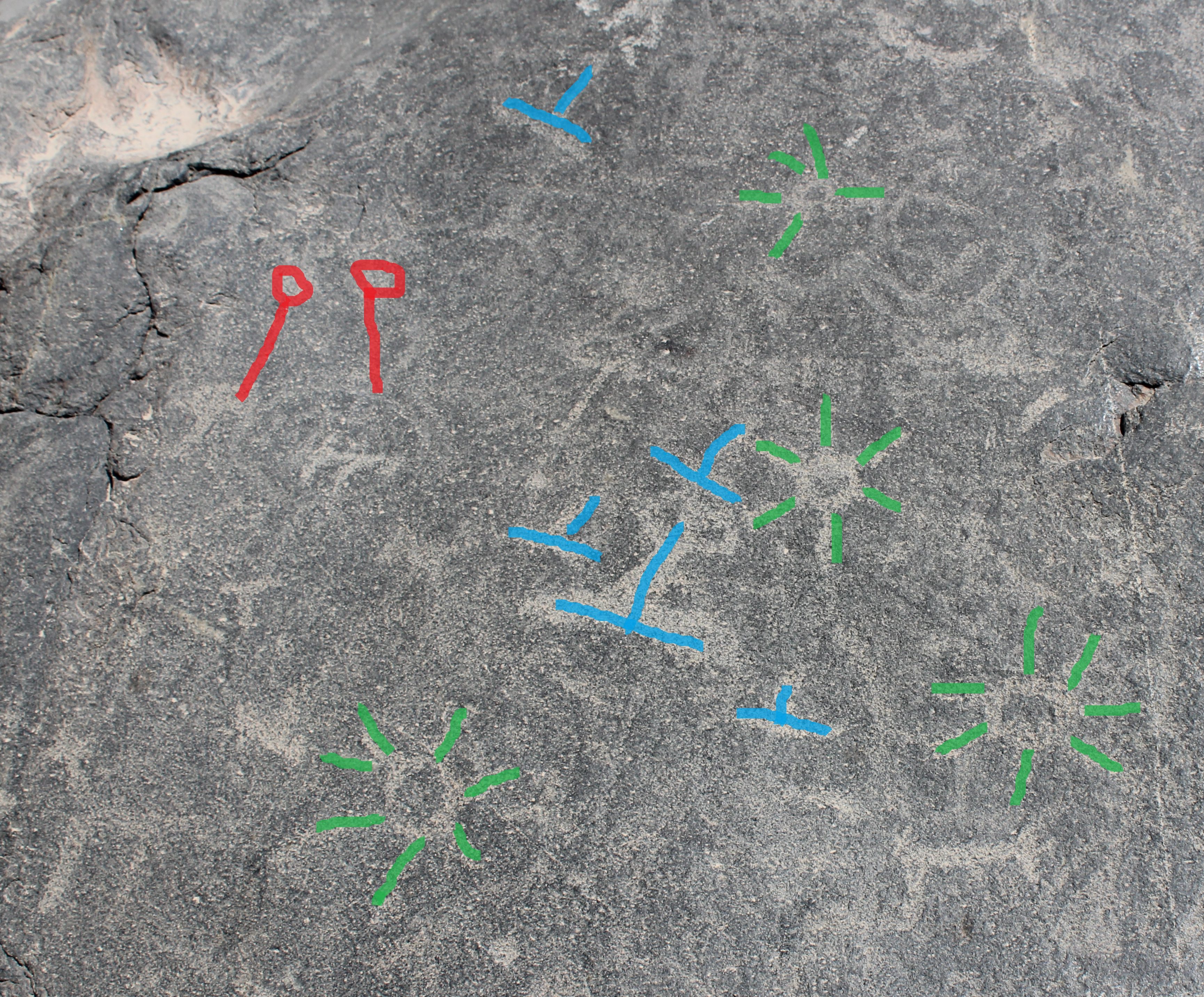
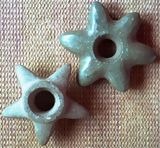
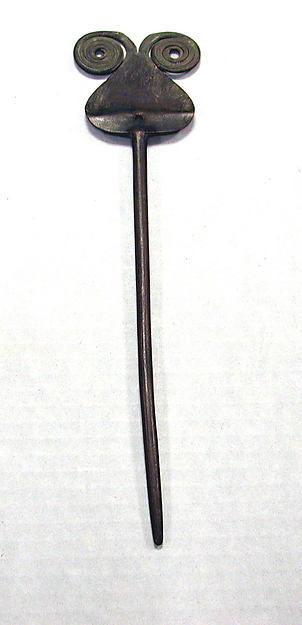
The smelting of ores to make copper seems to have begun with the Moche, from 2200 years ago. There are ceramics showing workers blowing air through pipes to oxygenate a furnace, in which are axe heads and sheets of copper.
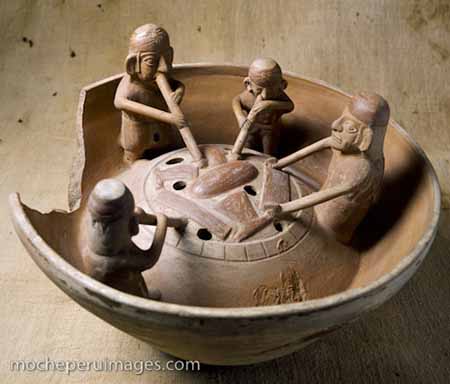
An early Moche burial excavated in the Jequetepeque Valley, which leads from north of Trujillo up towards Cajamarca in northern Peru, revealed a 20 year old man, wearing finely made copper headbands. He also carried metal shields, mace heads, spear launchers, metal chisels, axes, and darts. In his hand, he held small metal-working chisels. The burial was dated to 200 BCE. He would seem to be an metal-worker with the weapons that he made.
Coastal metal-working was routine over a thousand years before the Incas, at least in the north. Moche people of ordinary status were buried with a piece of folded copper sheet in their mouths or in their hand, whilst the richest burials would include gold and silver pieces, or gilded and silvered copper.
Some of these metal working skills were probably passed on in turn to the Sican culture, which flourished from 900 to 1100 CE. Almost five hundred copper implements which appeared to be digging points were found in a burial assigned to the Sican. They were designed to be mounted on a wooden shaft but appeared to be unused, in some cases unfinished.
In another 20 metre deep Sican shaft tomb, with 17 human sacrifices and layers of Spondylus shell and lapis lazuli, 500 kg of assorted copper objects were found including spear points and hoe blades. More interesting still were small rectangles of hammered and cut copper sheets, neatly stacked according to size. These so-called naipes have been found in several Sican tombs. Smaller naipes can be 4 x 2 cm, up to larger sheets of 8 x 10 cm.
This looks like some form of prototype money, easily transported and in standard sizes. It would have been particularly useful for long distance coastal trade.
As the Moche empire declined other cultures from high in the Andes expanded. Tiwanuku, at the southern end of Lake Titicaca, became a major trading centre around 600 CE and copper working is evident here. They may have produce molten metal to pour links to hold their stonework together.
At the same time, the Wari empire spread, building roads and sharing its highly stylised iconography in textiles and ceramics. Up to 1000 CE, these two empires influenced the highlands from Titicaca to Cajamarca – modern Peru from north to south – as well as, for the Wari, much of the coast.

The Chimu capital at Chan-Chan is thought to have housed fourteen thousand artisans – weavers, ceramicists, and metalworkers. Pedro Cieza de Leon, writing in 1553, says “as the Chimus were so skilful at making metals, many of them were taken to Cusco and the capitals of the provinces, where they wrought jewellery, vessels, and goblets of gold and silver, and whatever else they were ordered.”
Metal working in Mexico began just 1200 years ago, contemporary with late Moche and Sican, and some suggest the skills may have been transferred from Northern Peru by sea-going traders. Copper sheets in the form of tumis have been found in Mexico, in large quantities and standard shapes, which suggest they were a stored resource, manufacturing blanks or barter currency.
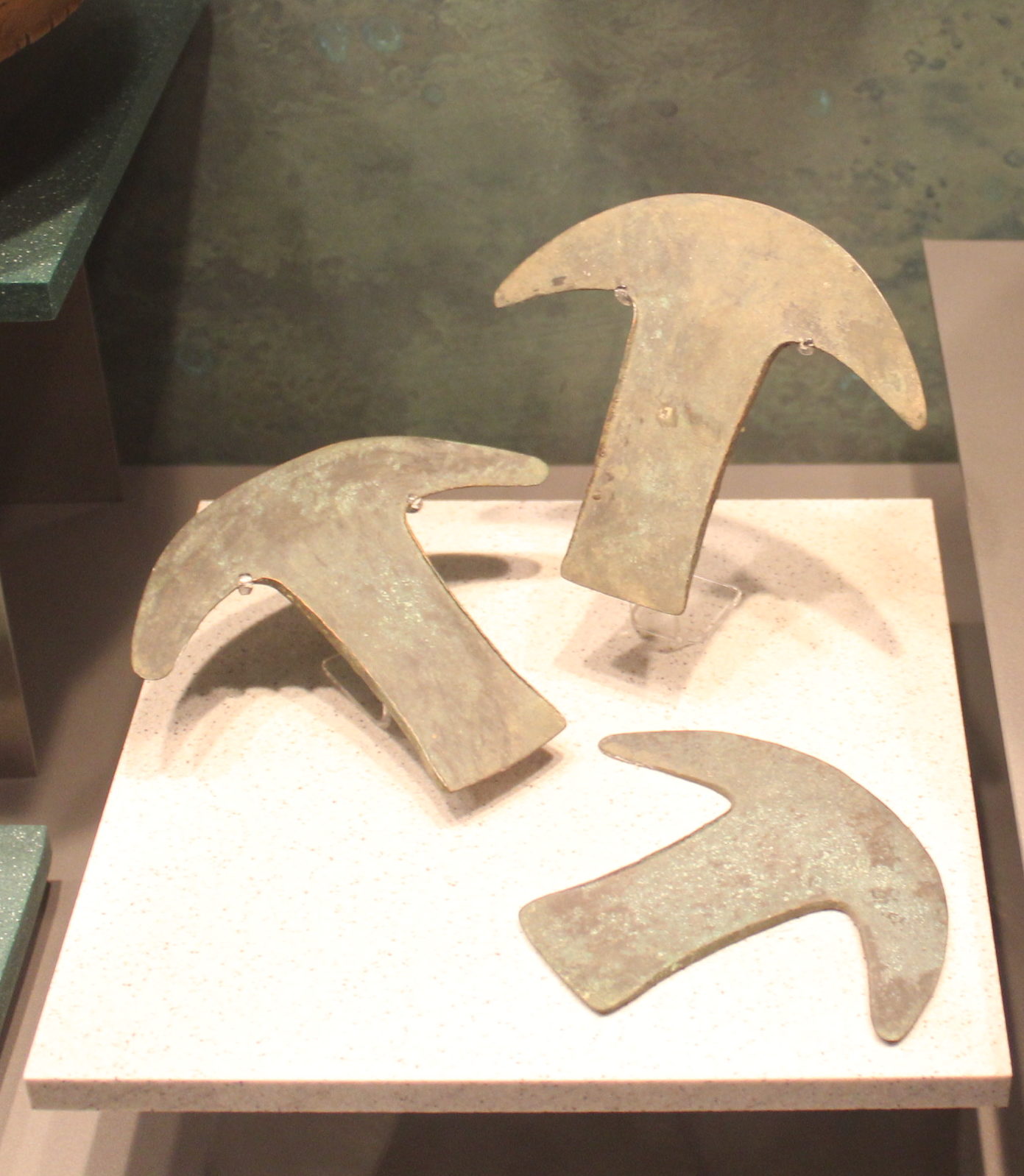
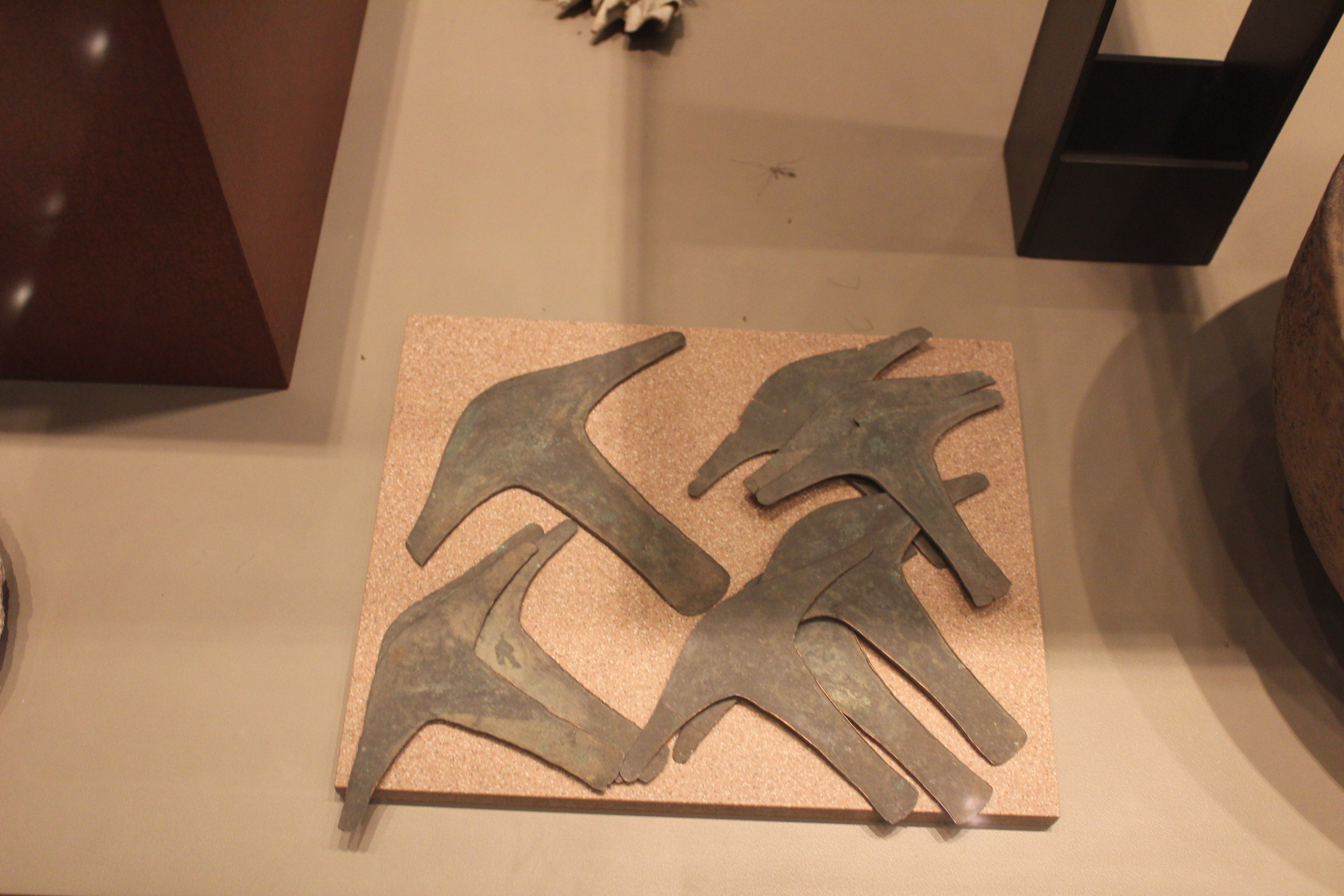
If the Sican or the Chimu were trading north to Ecuador or Mexico, then the equivalent southern trading centre would have been Chincha, just a few valleys south of Mala. The people of Chincha are described by chroniclers as powerful allies of the Inca, controlling a vast fleet of ships and trading from Cusco in the south to Quito in the north.
A manuscript found in 1970 in Madrid, thought to have been written by Spanish monks in Chincha around 1570, describes the area in Inca times, before the Spanish invasion.
The people of Chincha were very bold and smart, we are told “because only they in the kingdom trade with money.”
“Amongst themselves they bought and sold with copper what they had to eat and dress,” the Dominican friar continues, “and they had a measure for the value of each piece of copper.”
Similarly they had scales to measure the weights of gold and silver with which they traded, and the quality of the gold “from ten carats to twenty one and a half”.
The merchants were wealthy. “Each one of them has a reasonable (cash) flow, because the one who had the least (capital) traded with five hundred pesos of gold, and many of them traded with two million or three million gold ducats.”
Their wealth was evident from what the Spanish could dig up from the tombs. The Aviso tells us “When Hernando Pizzaro took charge of the indians in his encomienda in Chincha, he had as neighbours in the valley Thomas de Hontiveras from Guamanga and Diego de Mesa from Cañete, and they by the order of Hernando Pizzaro dug up the tombs of the dead indians” and he got for himself a hundred thousand marks of silver.
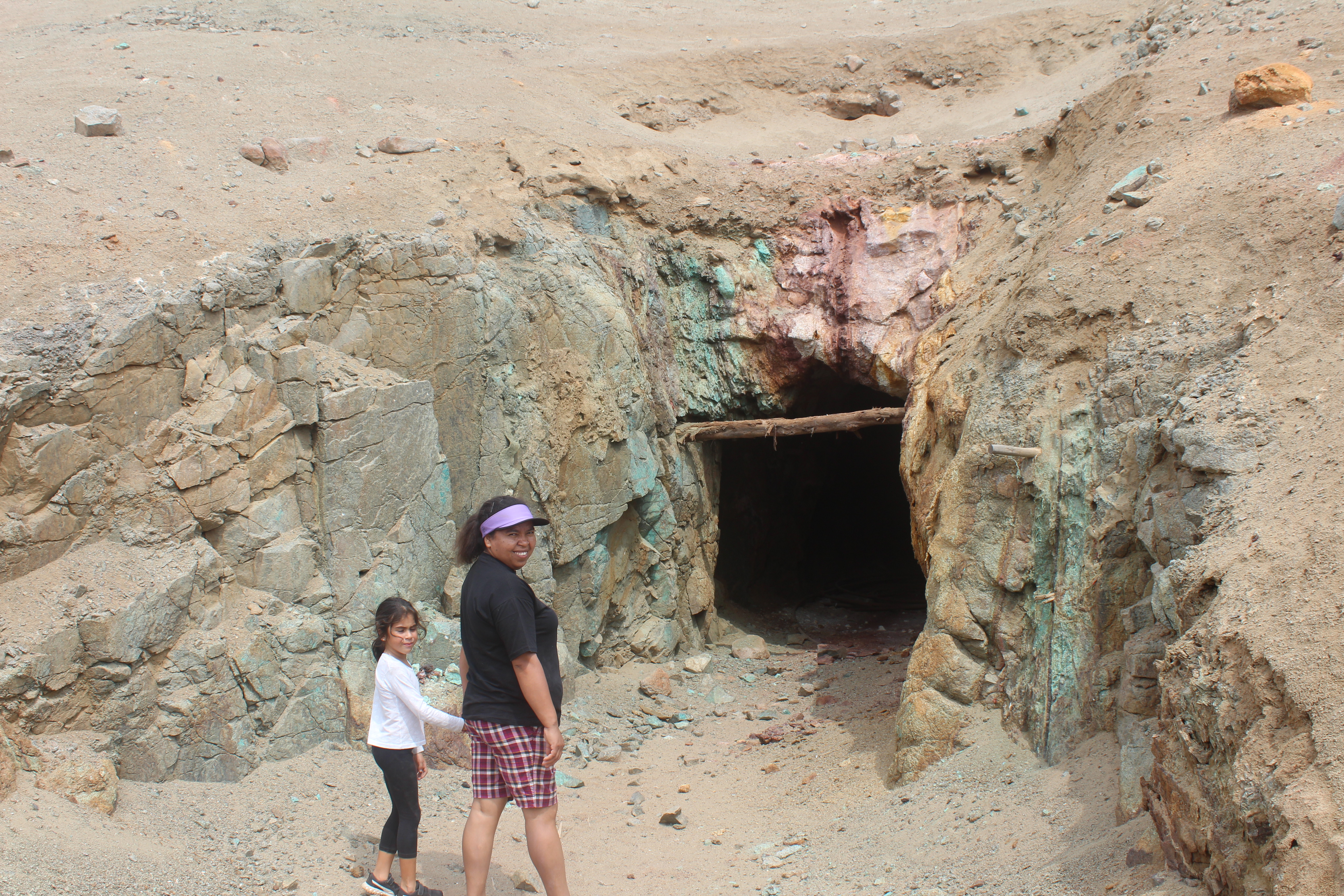
A cache of copper tumis was found in 1971 at the Chichacara site in the valley of Chilca, just to the north of Mala. This is a remote village, in a valley without a regular flow of water, but it appears to have been located next to a deposit of high quality clay.
The archaeologists found five roads entering and leaving the village towards the valley and the mountains, the remains of ovens for baking ceramics, still full of ash, and plentiful llama dung. This, they concluded, was a notable ceramic production centre, and the ceramics were exported. The metal sheets they found in the tombs could have been a handy form of barter, portable money, payment for the pots from merchants such as those at Chincha.
The potters village is only 13 km from Cochineros travelling over the hills from one valley to the next. From the petroglyph site you can walk 5 kilometres upstream, past Tortora Baja to Minay, and then to Chichacara in the next valley, two hours walk over the hills.
By car you could travel 80 kilometres on gravel tracks and modern roads, back down the valley to Mala, onto the PanAmerican Highway, and up the next valley to the north. When you arrive at Chichacara, the llama caravan that went over the hills will have already been rested an hour and fed. And the Cochineros merchant will have completed his purchase of pots, bartering with handy low volume copper sheets shaped like tumis.
The tumis emblazoned on the rocks could represent the graffiti of a mining culture, crude and disrespectful, that entered the valley and imposed its own statements on the agricultural and fertility rituals of the existing people. Brash new money shouting its presence. But if the tumis on the Mala rocks are homeward heading doodles, the guild identity marks of local metal workers, or the dollar signs of a barter centre, we should find further evidence in the valley and around for such an industry.
************************************************************
I call Mayra, and get through, after several failed efforts, on a breaking line.
“How are you? How is everything?”
“Its a mess. We need to get out. Get everybody out.”
“What do you mean? What will you do?”
“I don’t know. We have to eat. My grandmother needs medicines. Maybe we will walk.”
************************************************************
27 October 2016. Fuerza Popular uses its majority in Congress to nominate two of its supporters to the board of the BCR, the Central Reserve Bank. One is Jose Chlimper.
Jose Chlimper, of the faked tape, was Keiko’s vice-presidential candidate in 2016. He donated 222,000 Soles to Keiko’s campaign. He was minister of agriculture in the last three months of Alberto Fujimori’s government, when in November 2000 he passed the so-called Chlimper Law which reduced the rights of agricultural workers. The bill eliminated the annual bonus, compensation for arbitrary dismissal and Compensation for Time of Service which workers in other industries had. Jose Chlimper was at the time President of the Board of the Sociedad Agricola Drokasa SA. In 2016 the company controls vast farms with 443 hectares of grapes, 731 hectares of asparagus, and 2010 hectares of avocado.
